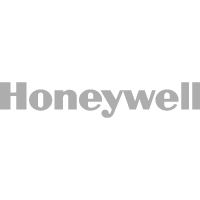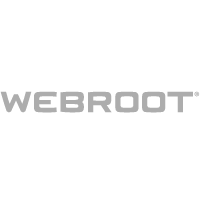



What Is Email Hygiene?
Accurate Threat Detection
Email Hygiene goes beyond email verification by identifying threats simple verification can’t identify, such as honeypot, disposable domains, and more.
Improved Deliverability
With a safe email list, marketers are empowered to better segment, engage, and prove ROI on their campaign efforts.
Compliance and Security
Identify compliance and security threats before an email is ever sent. Prevent screamers and legal headaches with preventative list hygiene methods.
Email Hygiene vs Email Verification
Email verification is about confirming that an email address exists and is deliverable, whereas email hygiene goes further to cleanse your list of addresses that are risky or problematic, like spam traps, which could damage your sender reputation. While verification checks the validity of an email, hygiene ensures the overall health of your email list by removing harmful or inactive addresses and mitigating deliverability issues.
How Webbula’s Email Hygiene Protects your Lists
Step 1: Data Collection
Webbula begins by securely collecting your email data. Whether through FTP or directly via our API, your data is handled with utmost security, ensuring confidentiality and integrity from the start.
Step 2: Analysis and Filtering
Using advanced algorithms and real-time processing, Webbula meticulously analyzes your data. We identify and filter out threats including spam traps, honeypots, and other malicious elements that could compromise your email campaigns.
Step 3: Reporting and Actionable Insights
After cleansing your email list, Webbula provides detailed reports and actionable insights. These reports highlight the health of your email data, showing improvements and potential areas of concern. This empowers you to make informed decisions about your email marketing strategies.
Facts and Questions about Email Hygiene
What is email list hygiene?
Email hygiene is a critical practice in email marketing, focusing on maintaining the cleanliness of an email list by regularly updating and purging invalid, outdated, or risky email addresses. The goal of email hygiene is to enhance email deliverability, protect the sender’s reputation, and improve overall campaign performance. Here’s how it works:
- Detection and Removal of Invalid Emails: Email hygiene services identify and remove email addresses that are incorrect, no longer in use, or have been abandoned.
- Reduction of Bounce Rates: By removing non-deliverable addresses, email hygiene helps in reducing bounce rates, which is crucial for maintaining a healthy sender reputation.
- Spam Trap Suppression: It helps in identifying and eliminating spam traps. These are email addresses used by blacklist providers to catch spammers.
- Risk Mitigation: It minimizes the risk of being blacklisted by ISPs by ensuring that the email list does not contain any risky email addresses such as those marked as complainers or previously identified as part of spam networks.
- Enhanced Engagement: Clean email lists mean that marketing efforts reach genuine, active users, which can lead to higher engagement rates.
Is the Multi-Method Hygiene platform a replacement for double opt-in permissions passing and other industry best practices?
No, while the platform provides additional intelligence, Webbula advocates for adherence to industry best practices like double opt-in and permission passing.
Does Webbula offer a free trial for Email Hygiene?
Yes, Webbula offers free 100 email hygiene credits to try out platform.
What is email verification?
Email verification is a process used in email marketing to ensure that email addresses on a mailing list are valid, deliverable, and active. It involves checking each email address against a variety of criteria to verify its authenticity before sending out marketing communications. Here’s how it typically works:
- Syntax Check: Email verification starts by ensuring the email address conforms to standard email formatting rules, like having an "@" symbol and a domain name.
- Domain Verification: The service checks if the domain of the email address is active and capable of receiving emails.
- Mailbox Existence: It verifies whether the mailbox exists on the server and can receive emails.
- Catch-All Domain Check: Identifies domains that accept all incoming email attempts regardless of whether the mailbox exists, which can be risky for sender reputation.
- Role-Based Address Detection: Identifies and flags emails tied to a role (like info@, support@) rather than an individual, which may affect engagement rates.
- Scope: Email hygiene covers broader aspects, including removing risky or problematic emails that could harm sender reputation, like spam traps and complainers. It also includes deduplication and list segmentation tasks. Email verification primarily focuses on whether an email is deliverable.
- Risk Management: Email hygiene often involves a deeper level of risk analysis, including identifying spam traps and other harmful email types that could result in a sender being blacklisted.
- Usage: Verification is usually conducted in real-time at the point of email collection, such as during signup forms on websites, while hygiene may be performed periodically on the entirety of an email list to maintain list health over time.
What are email blacklists?
Blacklisting in the context of email marketing is when an email sender's IP address or domain is placed on a list by Internet Service Providers (ISPs), Email Service Providers (ESPs), or blacklist operators (like Spamhaus or SpamCop). Being on a blacklist means that emails from the blacklisted IP or domain are either blocked or sent directly to the spam folder, significantly affecting email deliverability and overall campaign effectiveness. Blacklisting typically occurs when a sender has repeatedly sent emails that are marked as spam by recipients, or if the sender has been identified as sending malicious content, such as malware, or engaging in deceptive practices. It can also happen if a sender's emails frequently hit spam traps, which are email addresses specifically set up to catch spammers. How Email Hygiene Helps Prevent Blacklisting:
- Removing Invalid Emails: Email hygiene processes identify and remove invalid or non-existent email addresses from mailing lists. Sending emails to such addresses can lead to high bounce rates, which is a common factor for blacklisting.
- Identifying and Removing Spam Traps: One of the key aspects of email hygiene is the detection and removal of spam traps from an email list. Hitting spam traps is a major red flag for ISPs and can quickly lead to blacklisting.
- Reducing Spam Complaints: By maintaining a clean email list, email hygiene helps in reducing the rate of spam complaints from recipients. Recipients are less likely to mark emails as spam if the content is relevant and the list contains only active, engaged users.
- Enhancing Sender Reputation: Regular email hygiene maintains the sender’s reputation by ensuring that engagement rates are high and bounce rates are low. A good sender reputation is crucial for avoiding blacklists.
- Compliance with Email Sending Best Practices: Email hygiene supports adherence to best practices in email marketing by ensuring that lists are up-to-date and compliant with data protection regulations, further reducing the risk of blacklisting.
I want to learn more about email deliverability. Does Webbula offer content to help me learn more?
Yes, Webbula has a robust library of blogs and content to help educate users about email deliverability, verification, and more.
Visit Email Deliverability Blog









